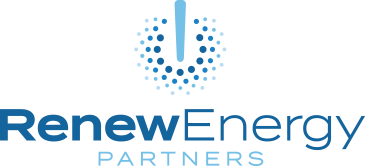The Blog
Scope 1, 2, and 3 Emissions: How to Reduce Them Effectively

RENEW Energy Partners specializes in funding energy saving retrofits for your commercial, industrial, and institutional buildings. There are many different technologies we can install to make your buildings more efficient and reduce your energy bill. The first place to start is calculating your organization’s Scope 1, 2, and 3 emissions.
Understanding Scope 1, 2, and 3 emissions
To reduce Scope 1, 2, and 3 emissions, the best place to start is to measure and understand your carbon footprint. As we like to say, you cannot reduce what you do not know.
Greenhouse gases (GHG) are divided into three categories for analysis – Scope 1, 2, and 3 emissions. Finding the origin of these emissions is key to reducing them successfully. By understanding their significance, potential analyses can be conducted to reduce them.
Scope 1
Organizations can measure and report their Scope 1 GHG emissions, which come from sources they own or control. Scope 1 carbon emissions include emissions from fossil fuels combustion in company-owned boilers, emissions from company-owned vehicles, and emissions from on-site waste disposal.
To reduce Scope 1 emissions, Renew Energy Partners funds and implements energy saving retrofits. Examples include replacing an outdated HVAC system with a more energy-efficient one or installing motion-sensor lighting. These measures will help reduce emissions while cutting energy costs.
Scope 2
Organizations need to account for Scope 2 emissions to calculate their overall carbon footprint. These are indirect GHG emissions from purchased electricity, heating, and cooling used by that organization. These emissions occur at the source of energy production rather than at the point of use.
To successfully reduce emissions, it is necessary to be aware of the policies and practices of energy suppliers. Tackling Scope 2 emissions is possible. Businesses can encourage their suppliers to decarbonize quickly or change to suppliers that are more eco-friendly. Alternatively, businesses can obtain energy from renewable energy resources.
Companies that wish to reduce their emissions can work with Renew Energy Partners. We provide funding to lower on-site energy consumption and/or assistance in installing renewable energy generation systems, geothermal systems, and co-generation solutions.
Scope 3
Scope 3 emissions refer to indirect emissions associated with the organization’s value chain including supply chain, product use, and disposal. This encompasses both upstream and downstream activities such as production and transportation of raw materials. Understanding Scope 3 emissions can help organizations identify potential sources of GHG emission reductions.
These emissions are often the most significant source of emissions for many organizations, especially those with complex supply chains.
Organizations must take responsibility for their value chain activities, from purchasing to disposal, to reduce their Scope 3 emissions. Working with value chain stakeholders to reduce Scope 1 and 2 emissions can have a major impact on lowering Scope 3 emissions.
Renew Energy Partners is now working with Manufacture 2030 to provide businesses a reliable platform for monitoring, controlling and lowering their value chain emissions. Our combination of services delivers simple solutions to empower your suppliers and help you hit your Scope 3 carbon reduction targets.
Lowering Scope 1, 2, and 3 emissions
Understanding the sources of your company’s carbon emissions and measuring your carbon footprint is a great place to start to lower scope 1, 2, and 3 emissions efficiently.
Where possible, it’s best to look for ways to avoid carbon-intensive activities at the source. Also, make sure to invest in efficient boilers, furnaces, and processing equipment for cutting down on emissions.
Improving energy efficiency by implementing measures such as upgrading HVAC systems and lighting, optimizing building management systems and operations, and implementing energy-efficient practices to reduce energy consumption.
As an alternative, replacing carbon-intensive energy sources with cleaner, low-carbon alternatives such as renewable energy sources, biomass fuels, geothermal, or solar.
Additionally, consider utilizing alternative-powered vehicles for your business fleet or distribution and delivery network—electric vehicles have a significantly smaller environmental footprint than gas and diesel counterparts. Switching to electric vehicles can also help reduce emissions, particularly for businesses that rely on transportation for their operations.
Supply chain sustainability can also help reduce emissions by optimizing transportation and logistics, reducing waste, and encouraging suppliers to adopt more sustainable practices.
Finally, adopting sustainable building practices is one of the best ways to significantly reduce emissions by improving energy efficiency, using sustainable materials, and reducing waste in construction and demolition.
Combining these operational updates with on-site renewable energy such as solar, wind, and hydropower can immediately cut Scope 1, 2, and 3 emissions generated by your company. By implementing these strategies, businesses can lower their GHG emissions efficiently and contribute to the global effort to combat climate change.
How does cutting Scope 1, 2 and 3 emissions fit into a business plan?
Businesses have started re-aligning their strategies to combat climate change and reduce carbon emissions, including those in the oil & gas industry, auto manufacturers, pharmaceuticals, consumer brands and more. As an organization, Scope 1 and 2 emissions-reduction strategies can be incorporated directly into a business plan.
Creating a business plan that incorporates efficiency in processes, manufacturing, facilities management, and vehicle fleets leads to financial savings, improved competitiveness, and healthier bottom-lines. This reduces your financial liability for carbon taxes now or in the future, boosts sustainability for the long-term and helps present your brand image more positively in the global arena.
No matter how you decide to increase your energy efficiency and meet Scope 1, 2 and 3 emissions reduction goals, these kinds of projects require funding. In order to fund an energy efficiency project for your building(s), RENEW Energy Partners offers a Master Service Agreement (MSA). The Master Service Agreement:
- May be treated as an off-balance sheet transaction. In that case, you do not own the asset or carry it on your balance sheet (consult your tax advisor).
- RENEW provides preventive and corrective maintenance in the service agreement.
- Your payment to RENEW will be based on the energy savings confirmed once the system is operational.
The RENEW Master Service Agreement allows businesses to focus on what they do best, while ensuring that their facilities are performing at their peak with brand new, and high-efficiency equipment. In this current climate of cost control and resource allocation, the energy service agreement is the perfect solution to help businesses meet sustainability goals and keep facilities in top condition. Reach out to RENEW and talk to us about financing your energy saving retrofits today.




